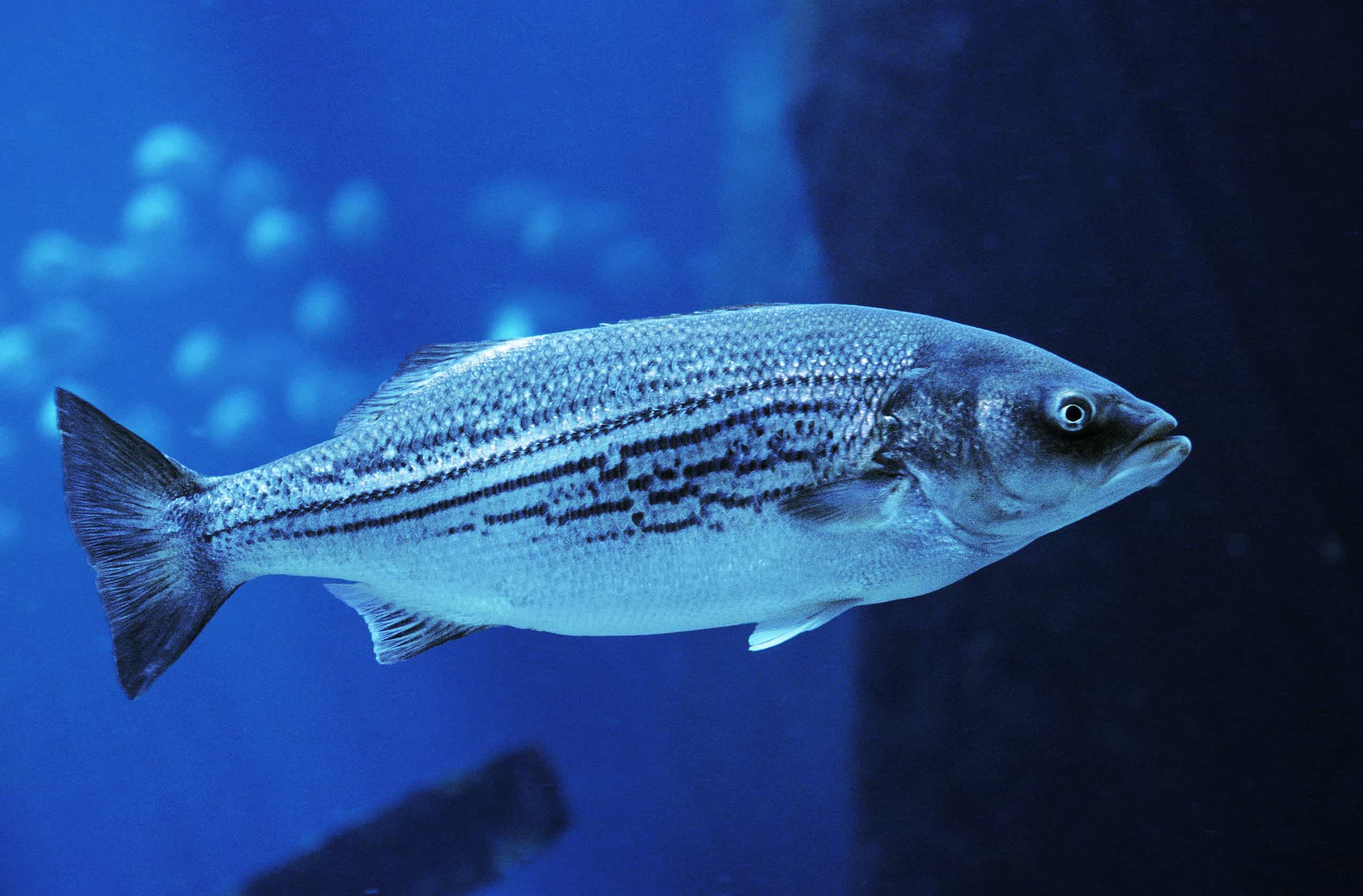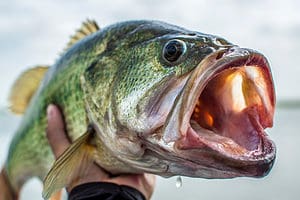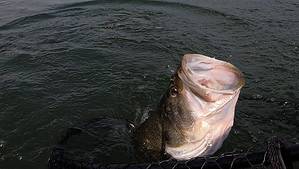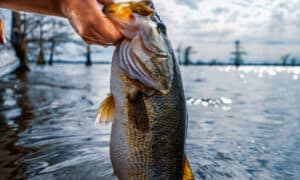Ohio has a plethora of fishing spots. One of the most common fish in Ohio is the striped bass, but white bass are more common. Some of the greatest fishing holes in Ohio are Leesville Lake, Clear Fork Reservoir, Wellington Reservoir, Crown Lake, Salt Fork Lake, Lake Erie, and the West Branch Reservoir. The state-record striped bass was caught in one of these lakes and is a true giant! Follow along to discover the largest striped bass ever caught in Ohio.

What is the Largest Striped Bass Ever Caught in Ohio?
On July 2, 1993, Mark Chuifo caught a 37-pound 1.6-ounce striped bass in the West Branch Reservoir. This record-breaking fish was 41.25 inches long. West Branch Reservoir is in Portage County and has a maximum depth of 60 feet. While fishing here, you may find northern pikes, bluegills, walleyes, and largemouth bass. As impressive as Mark Chuifo’s catch is, it’s nowhere near the world record. Instead, the world record goes to Gregory Myerson’s 81-pound and 14-ounce catch.
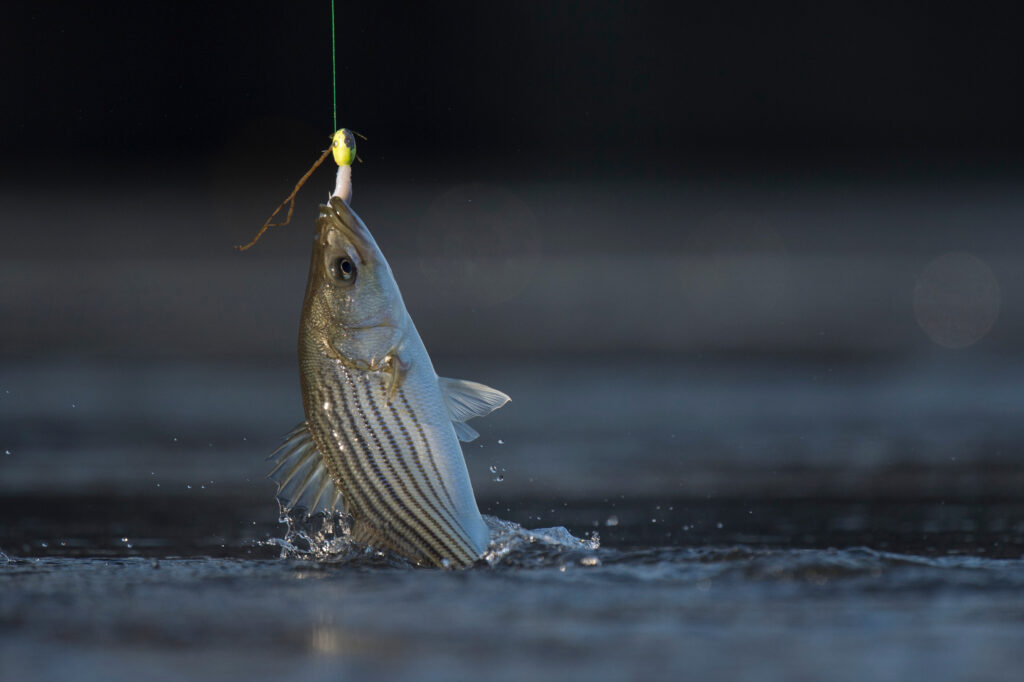
The largest striped bass ever caught in Ohio weighed 37 pounds and 1.6 ounces.
©Ray Hennessy/Shutterstock.com
About Striped Bass
Striped bass are listed as Least Concern on the IUCN Red List. These silvery fish go by many names including stripers, Atlantic striped bass, and rockfish. Striped bass are very common in the United States. They are stocked in many recreational lakes. This fish is so abundant and important in North America, that it’s the state fish of South Carolina, Maryland, and Rhode Island.
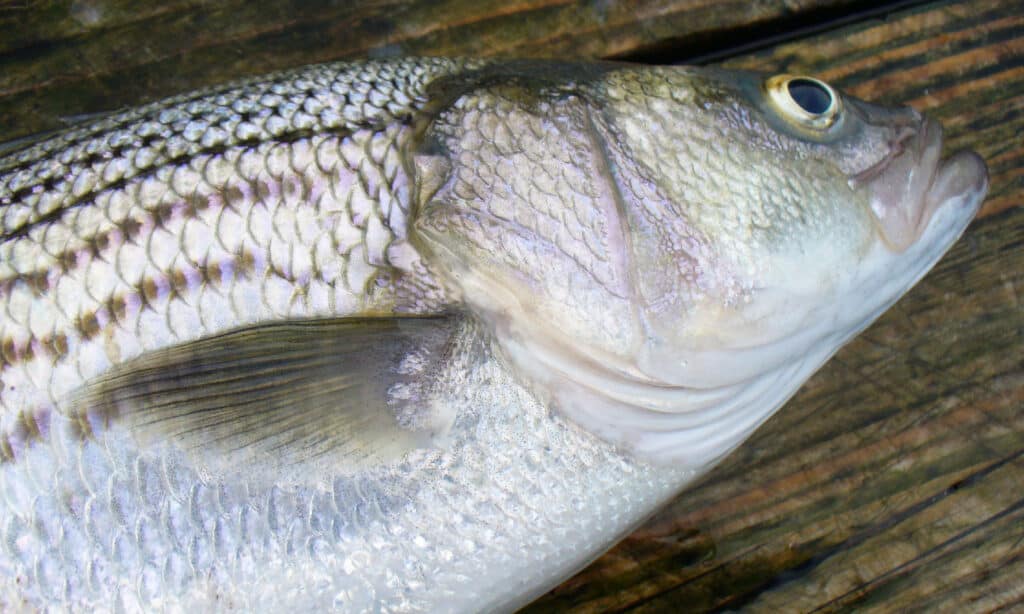
Striped bass are sometimes called stripers.
©iStock.com/Coast-to-Coast
Appearance and Size
Striped bass are easy to identify. They are slender, streamlined silver and white bodies with dark longitudinal lines, which is where their name comes from. Striped bass vary slightly in size and coloration depending on the region and if they are a hybrid striped bass. Hybrid striped bass are also silverish and white but have broken horizontal stripes on their bodies.
Striped bass are medium-sized fish. They are typically about 20 to 40 pounds but can weigh more. Although not the world record, the largest striped bass ever recorded weighed 124 pounds. Striped bass also measures about 20 to 35 inches long.
Distribution and Habitat
Striped bass have a wide range. In their natural range, they live on the Atlantic coastline of North America. You can find them from the St. Lawrence River in Canada down to St. John’s River in Florida. Striped bass are also abundant in non-native waters. They’ve been introduced to the Pacific Coast of North America. Apart from Canada and the United States, you can find non-native striped bass in Iran, Turkey, South Africa, and Ecuador.
These lovely silvery fish migrate between saltwater and freshwater. Interestingly, some striped bass populations live in landlocked lakes. This likely occurred when rivers were dammed, creating lakes. An example of this is Lakes Moultrie and Marion.
Diet
Striped bass aren’t picky eaters. Their diet though varies depending on their size and age. For instance, juvenile striped bass eat insect larvae, small crustaceans, and small fish. Mature and large striped bass though transition to mainly eating fish. A few fish striped bass eat include cod, silver hake, herring, and flounder.
Predators
Interestingly, although striped bass eat silver hake and cod, small juvenile striped bass are also hunted by these fish species. Adult striped bass are eaten by seals, seabirds, sharks, and whales. Fish-eating birds are one of the most common striped bass predators.
Anglers
Striped bass are favorites for many anglers because they are tough, thick fish, that put up a fight. There are different methods of catching striped bass. Some anglers swear that they have a better chance of catching these fast fish from the shore using floating live bait. However, others recommend catching fish from a boat far from the shore since striped bass are sometimes found at depths up to 40 feet, deeper.
Other Fish in Ohio
Striped bass aren’t the only fish in Ohio. There are plenty of other freshwater and saltwater fish you can try your luck at catching. Listed below are some fish species found in Ohio, and their state records.
Carp
One fish species you can find in Ohio is the carp, specifically the common carp. It’s also known as the mirror carp. This large fish is native to Europe but has been in the United States since the 1800s. Ohio first stocked common carp in 1879. These large fish are survivors and excellent hunters. They adapt to many environments, including lakes and ponds with poor water quality. Common carp are generally 15 to 30 inches long and weigh 5 to 10 pounds, although anglers have caught larger carp. These silvery-white and yellow-white fish live in heavily vegetated bodies of water, where they hide and hunt. The largest common carp ever caught in Ohio weighed 50 pounds. In 1967, Judson Holton caught a 40-inch-long common carp in Paint Creek. Paint Creek is an excellent fishing spot for black crappie, bluegill, white crappie, and largemouth bass.

Adult common carp are about 15 to 30 inches long, although larger have been recorded.
©Vladimir Wrangel/Shutterstock.com
Coho Salmon
Another fish that lives in Ohio is the coho salmon. Coho salmon aren’t extremely common in Ohio, which makes them exciting catches. These large salmon are anadromous fish native to the North Pacific Ocean. You can find these colorful fish in Japan, the United States, Russia, and Canada. Although coho salmon aren’t native to Ohio, they are found in the Great Lakes. These fish vary in color and size. While in the ocean, coho salmon are silverish and dark blue. However, when they spawn, coho salmon have bright red sides and bluish-green heads and backs. They also have some dark spotting around their backs. So, how big can these fish reach? The largest coho salmon caught in Ohio was 13 pounds and 10.8 ounces. Barney Freeman caught this 34.75-inch-long salmon in the Huron River in 1982.
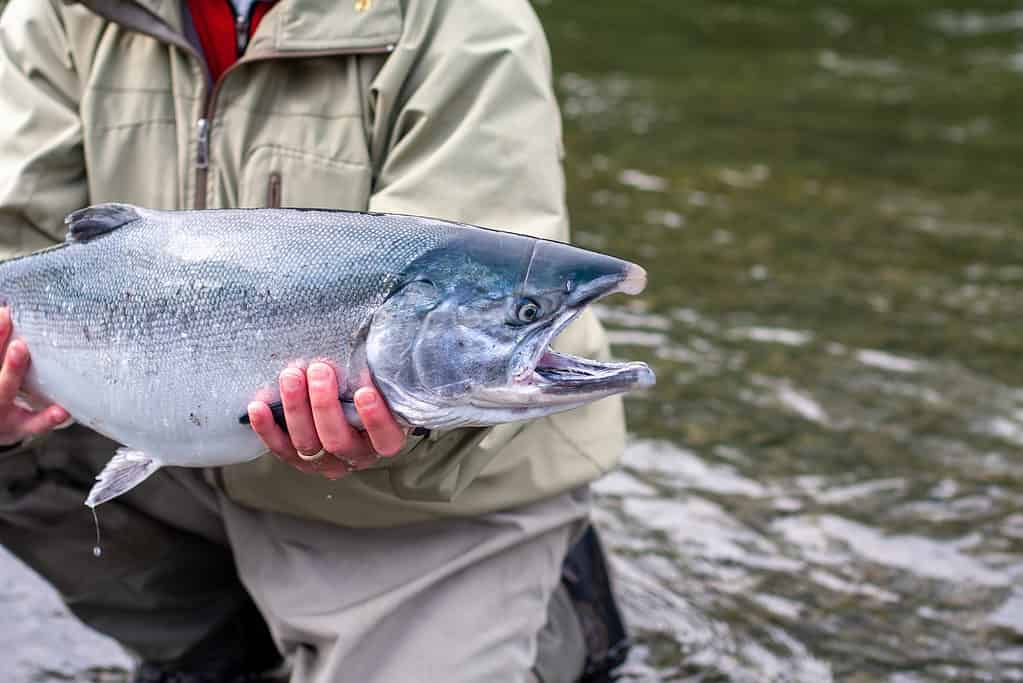
Coho salmon develop bright red sides when entering freshwater.
©iStock.com/christiannafzger
Muskellunge
The next fish on our list is the muskellunge. These long and mighty fish are native to Ohio and are abundant in the Ohio River and Lake Erie, although you can find them in many other Ohio lakes. The muskellunge is also called the muskie. It’s a large freshwater fish in the Esocidae. This fish is abundant throughout the United States and is listed as Least Concern. Muskies vary in size, although they are usually very long. The largest muskie recorded weighed 67 pounds and 8 ounces and was 60.25 inches long. The largest muskellunge ever caught in Ohio is only about 10 pounds smaller. On April 12, 1972, Joe D. Lykins caught a 55-pound and 2.08-ounce muskie in Piedmont Lake. It was 50.25 inches long.
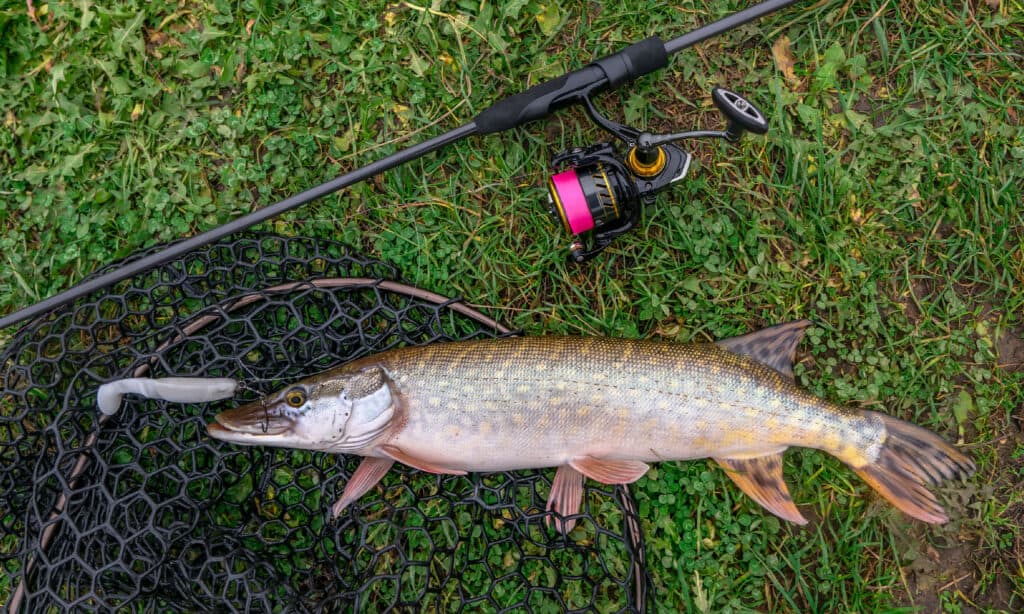
Muskies are native to Ohio and are abundant in the Ohio River.
©iStock.com/FedBul
Saugeye
Last but not least is the saugeye. Saugeyes are hybrid fish. They are fish produced from a female walleye and a male sauger. Saugeyes are common in Ohio. The Ohio Division of Wildlife produces saugeyes and stocks them in reservoirs throughout the state. They can vary in appearance, sometimes taking after their sauger parent. These hybrid fish usually have dark stripes or spots between the spines of the first dorsal fin. They are also known for a visible, but light, large dusky spot on the rear base of the first dorsal fin. Saugeyes are about 12 to 18 inches long but can grow larger. They also weigh up to 14 pounds. In Ohio, the largest saugeye ever caught weighed 14 pounds and 4 ounces. Roger Sizemore caught this impressive 30-inch fish in 2004 in Antrim Lake.
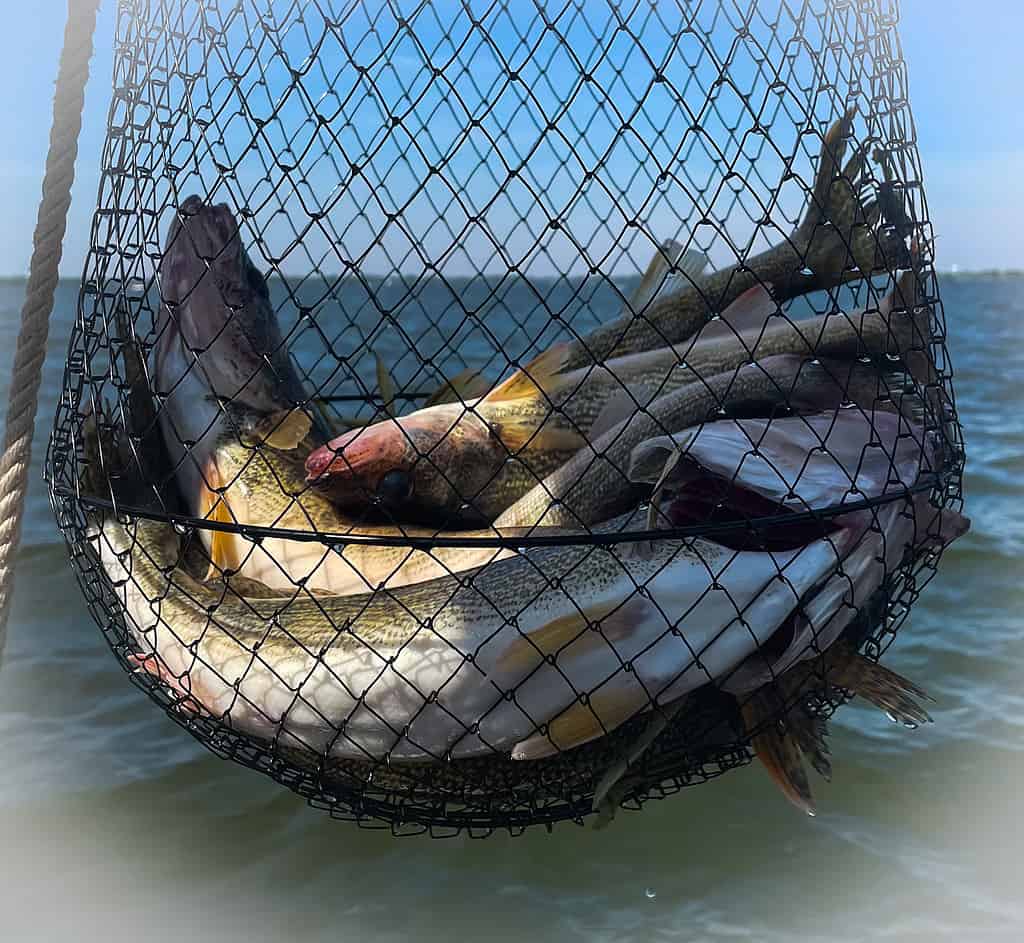
Saugeyes are hybrid fish. They are produced with female walleyes and male saugers.
©John Grieshop/iStock via Getty Images
Thank you for reading! Have some feedback for us? Contact the AZ Animals editorial team.

